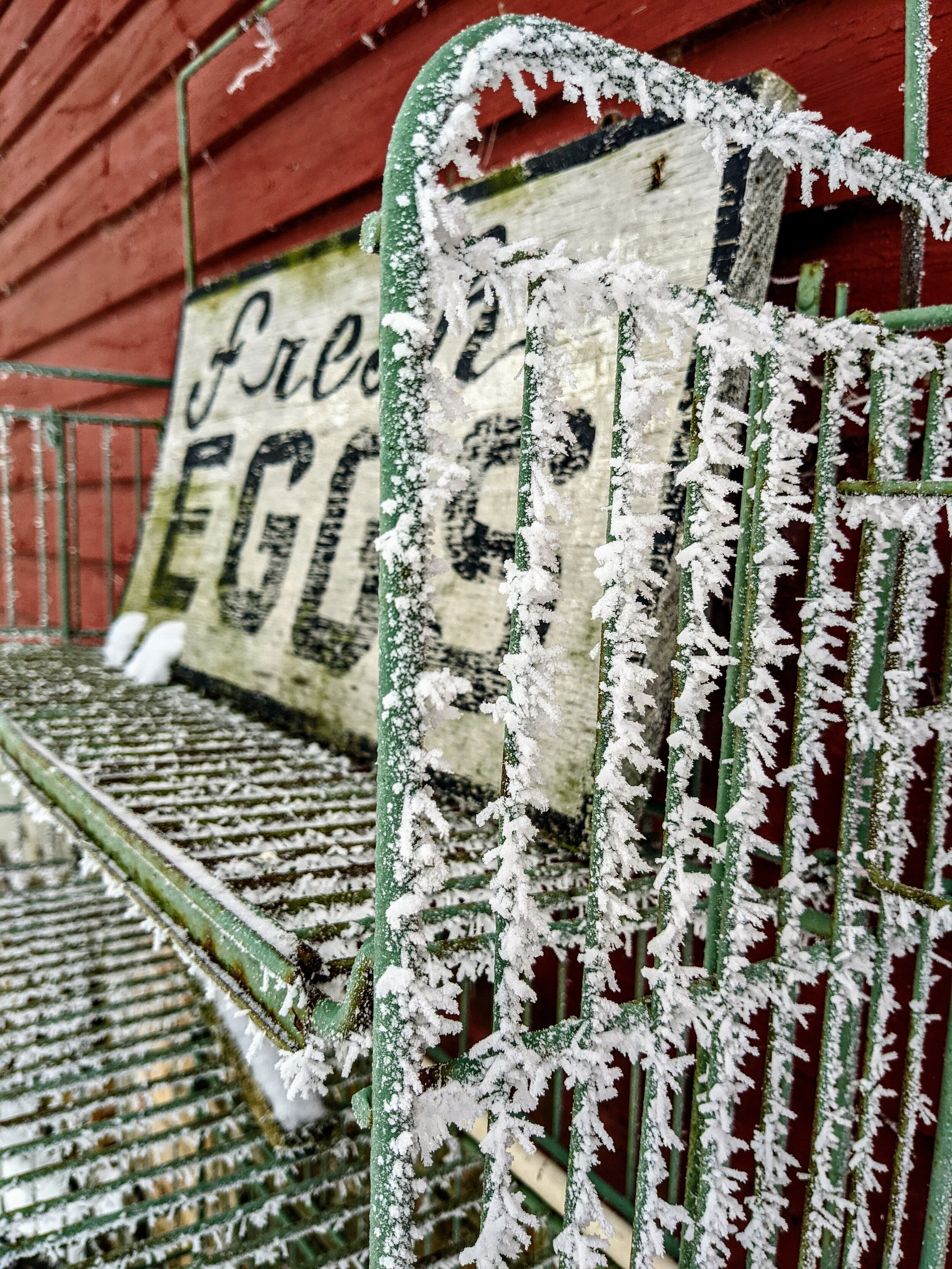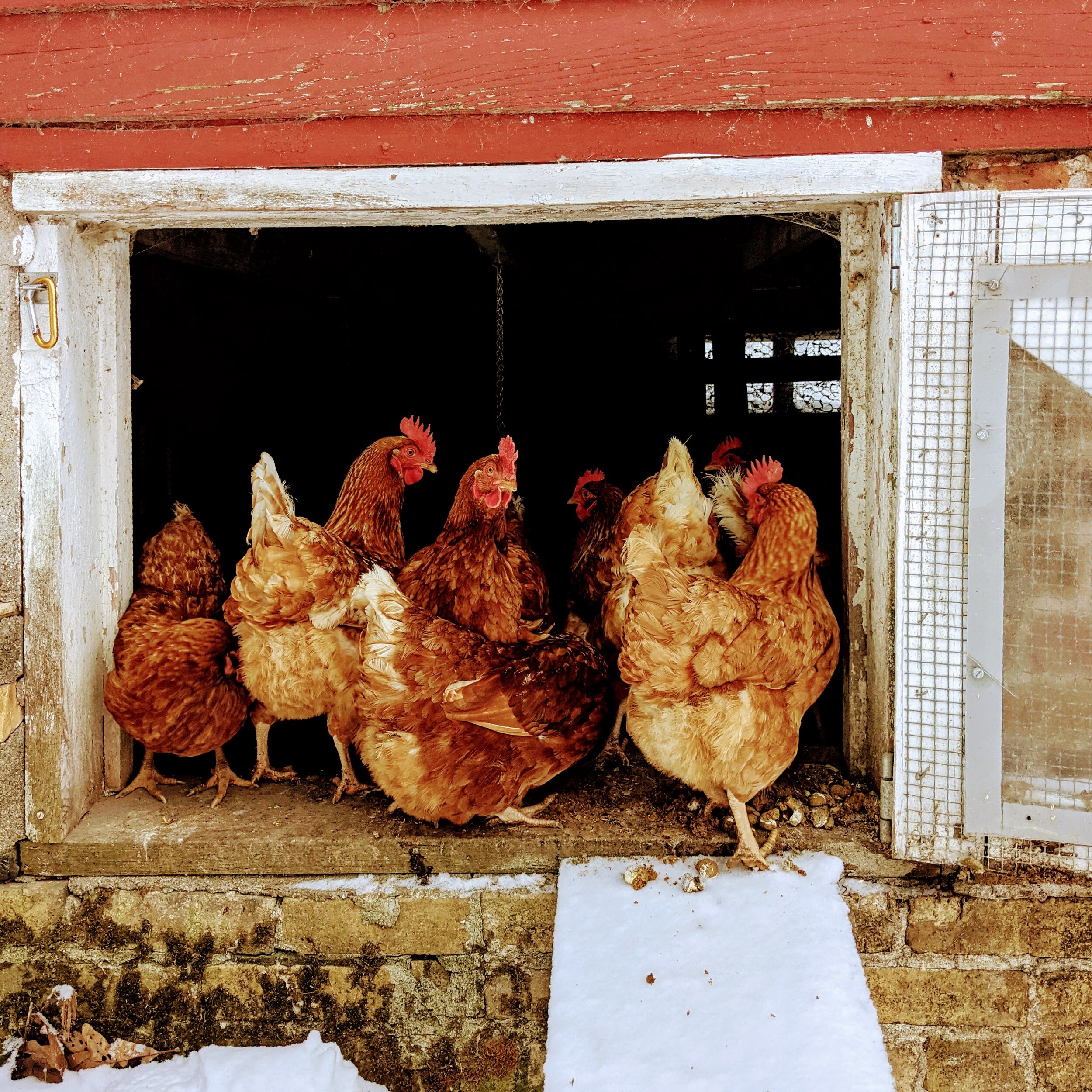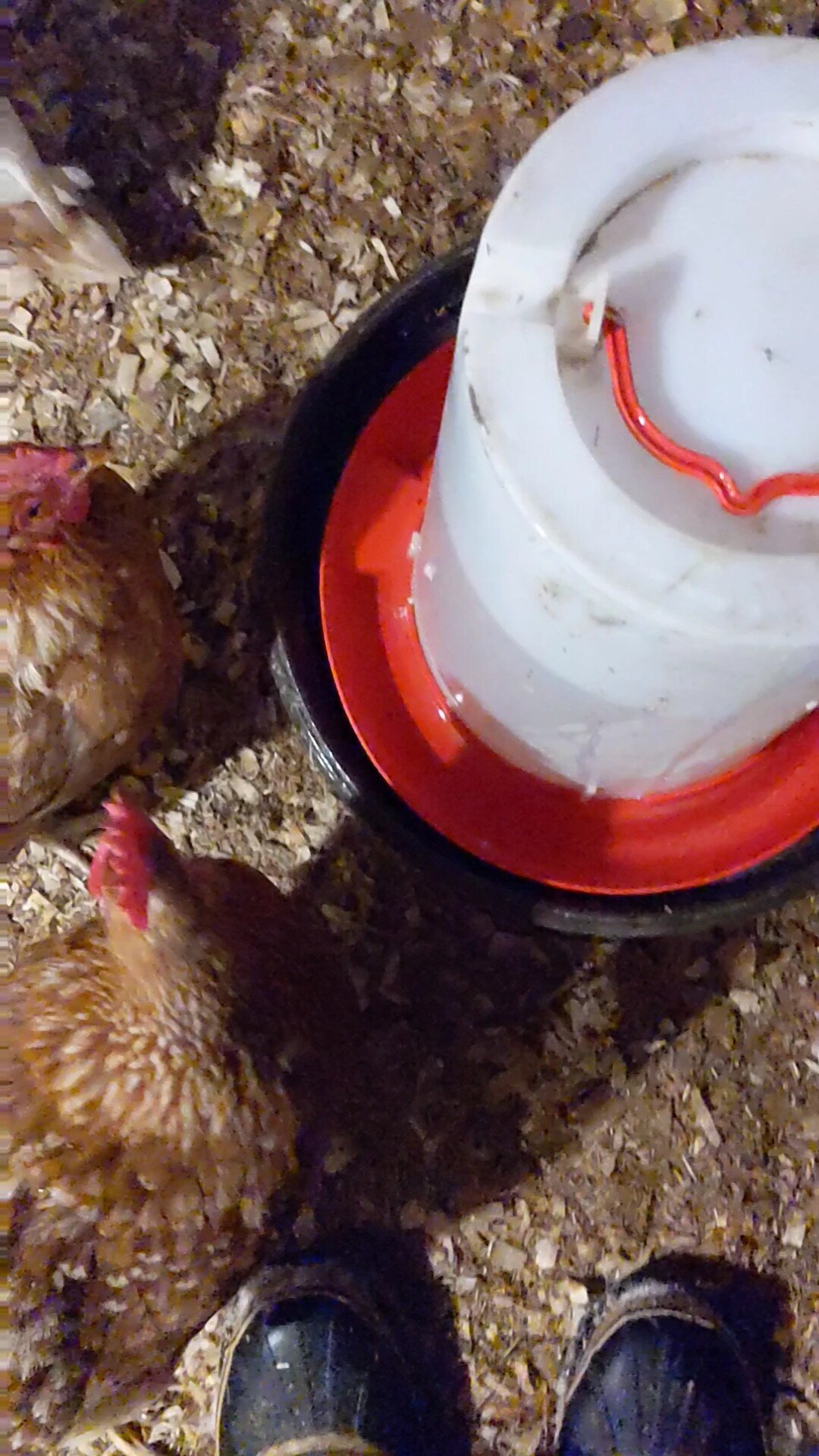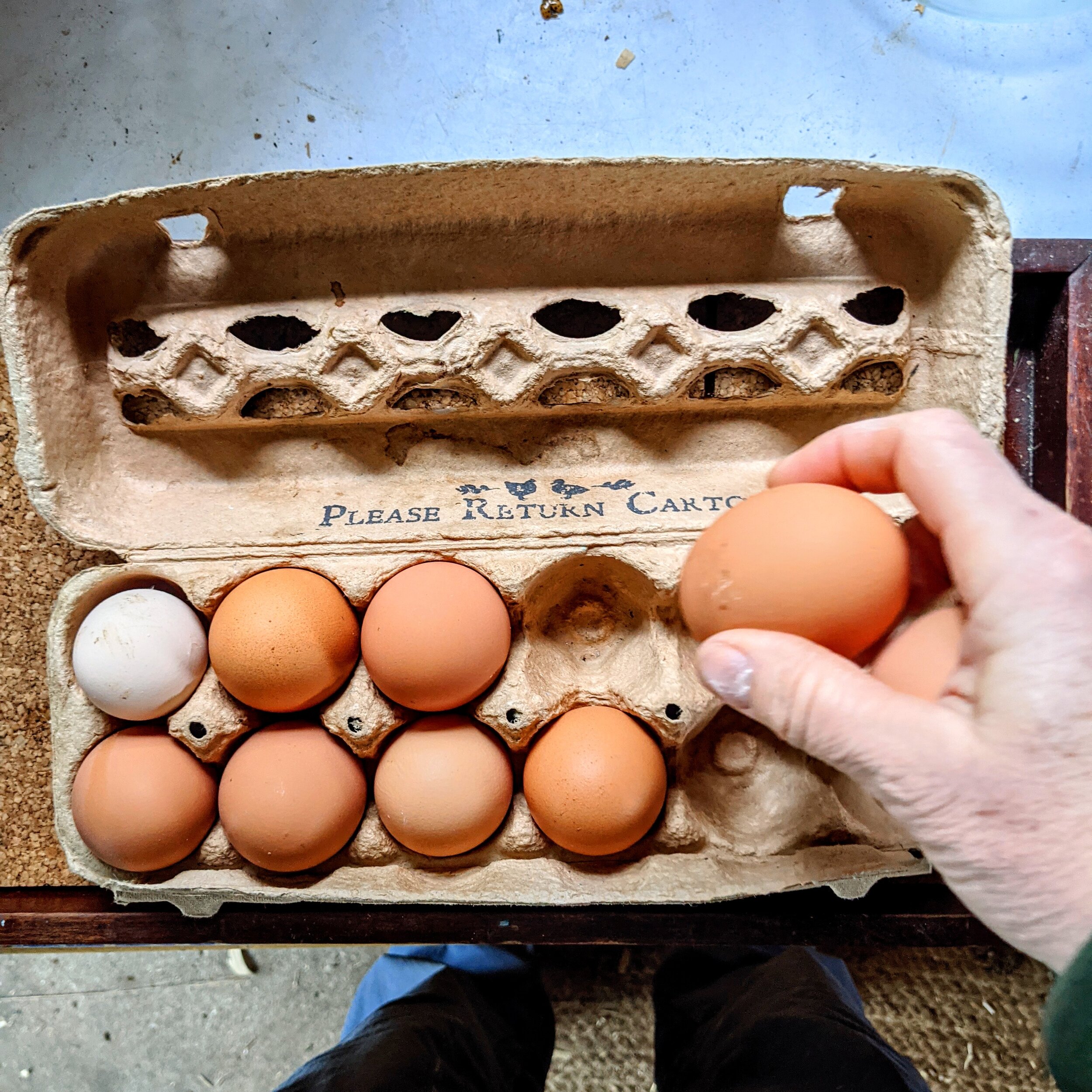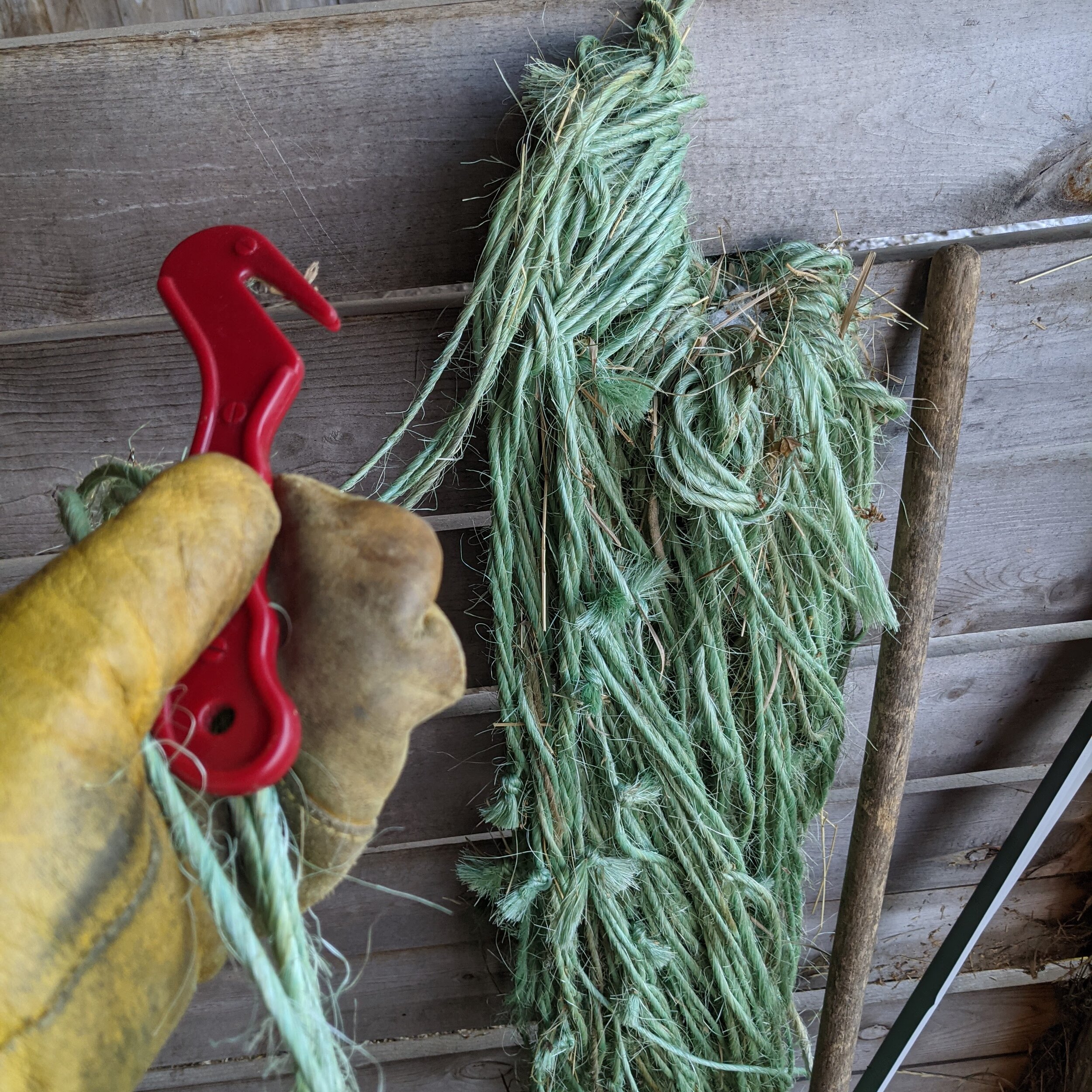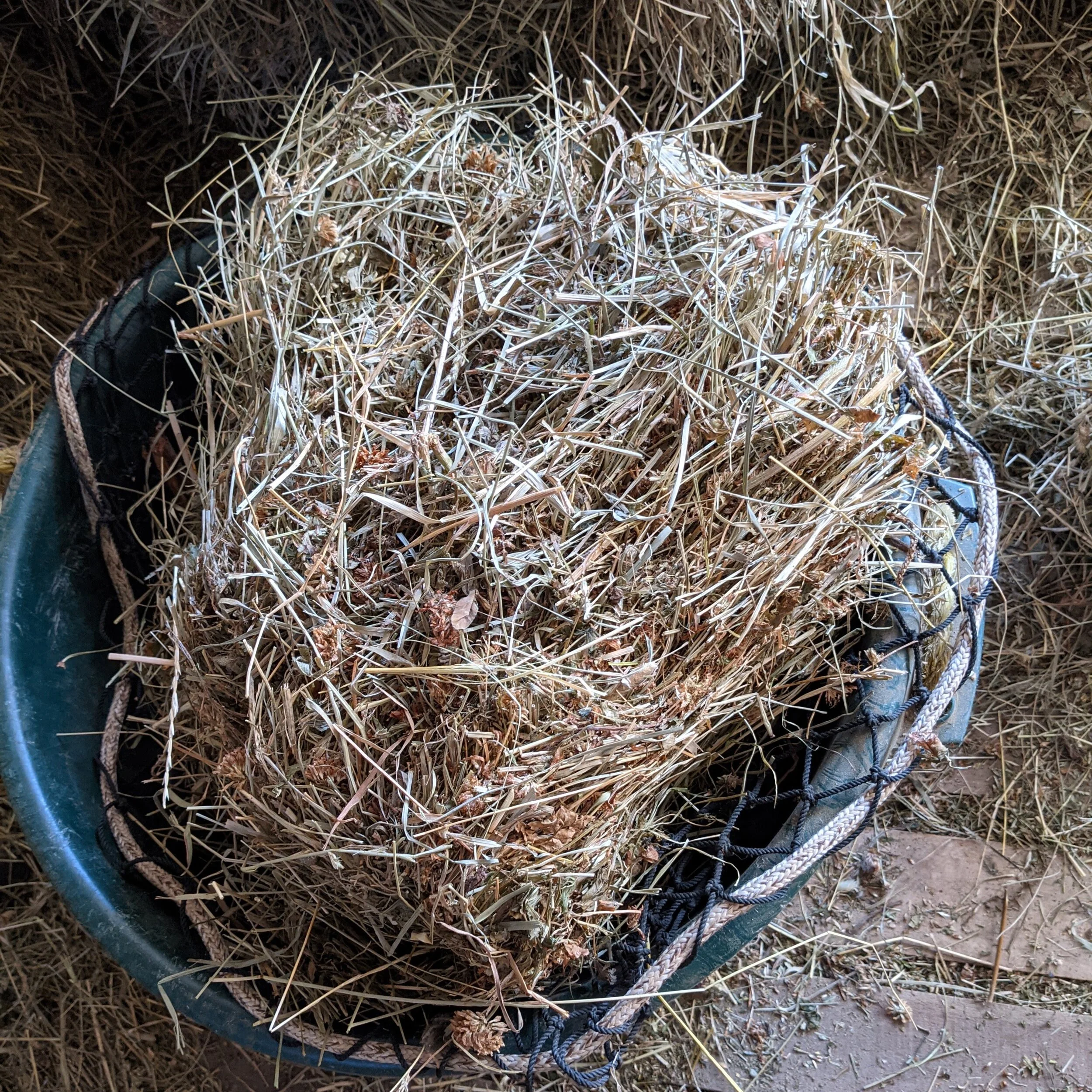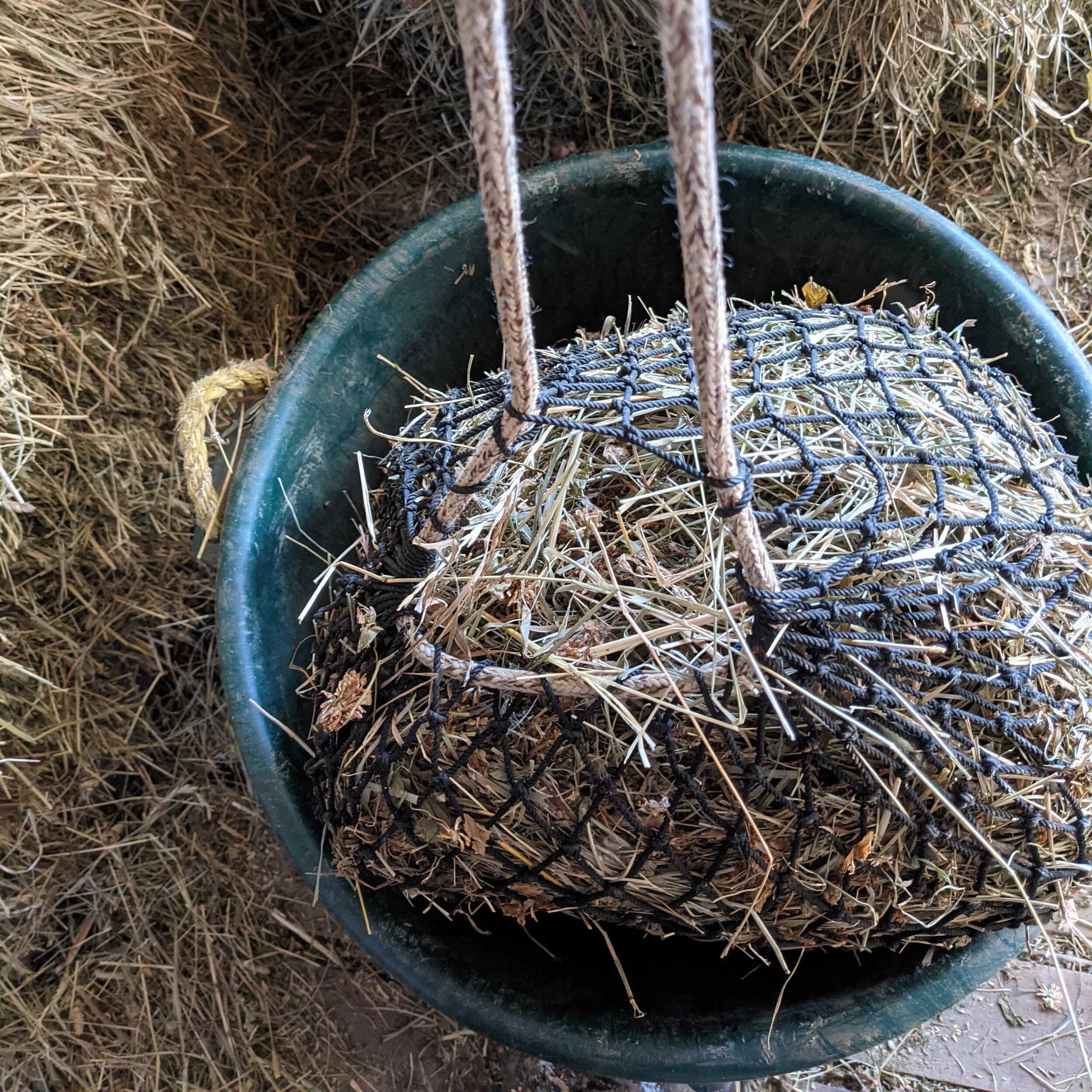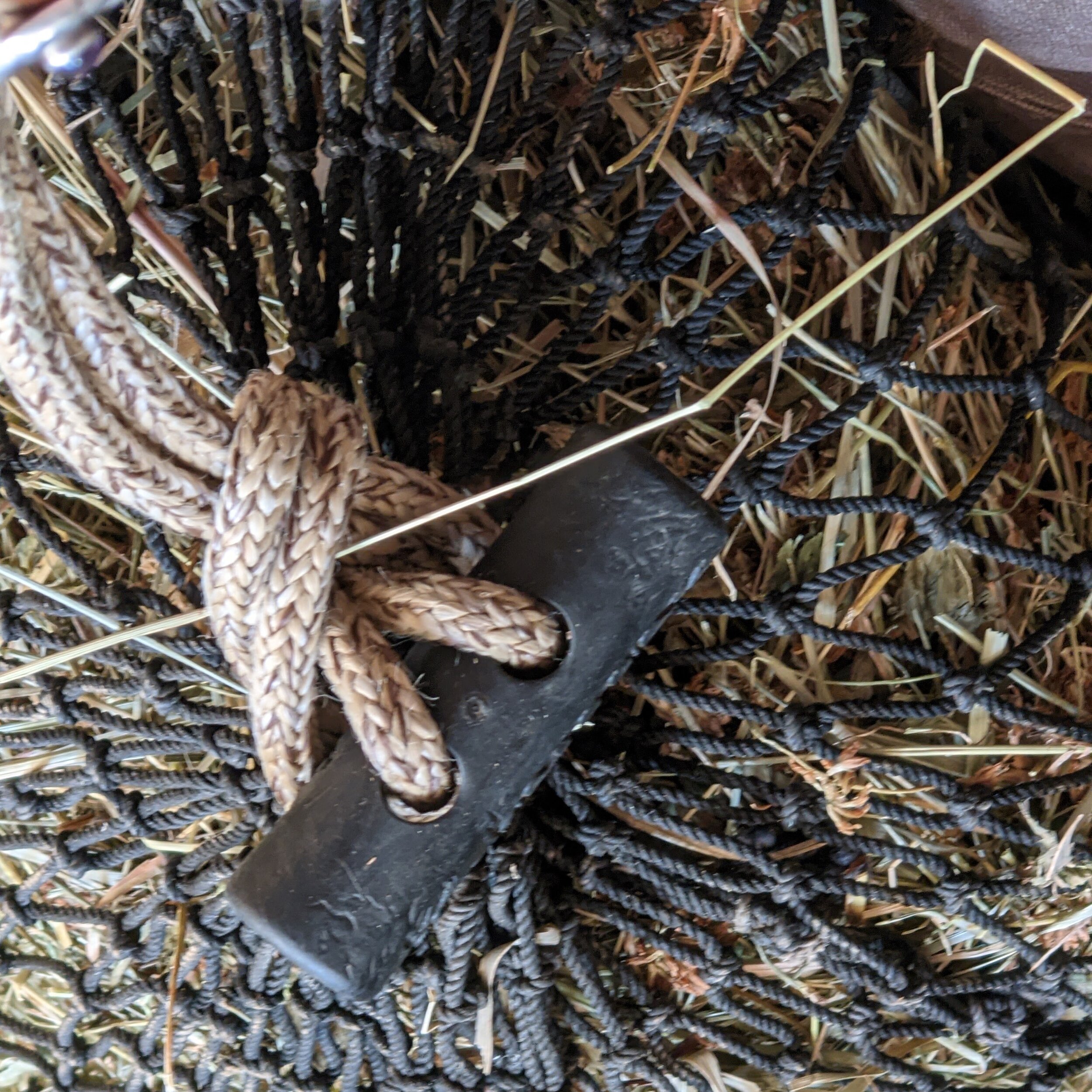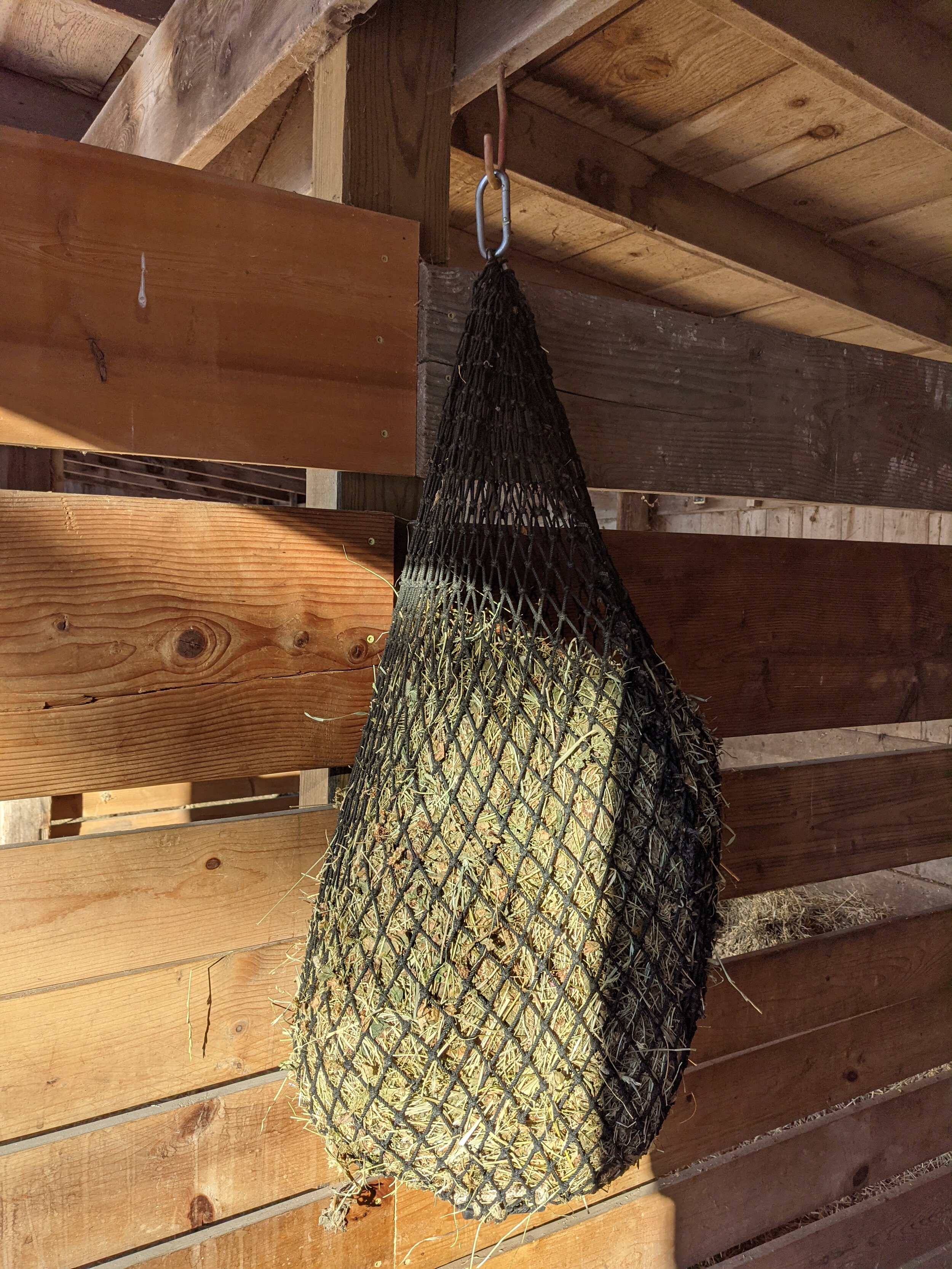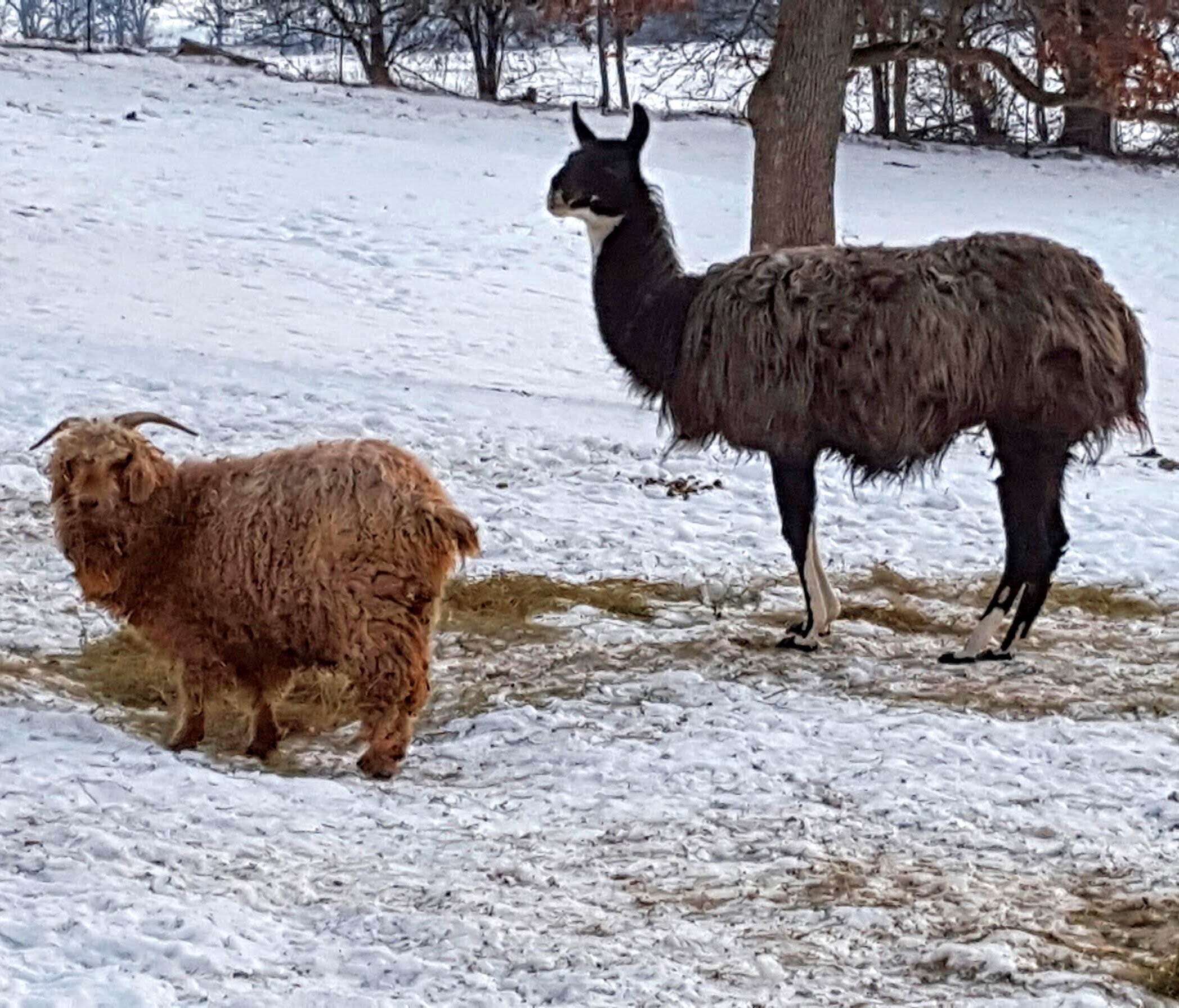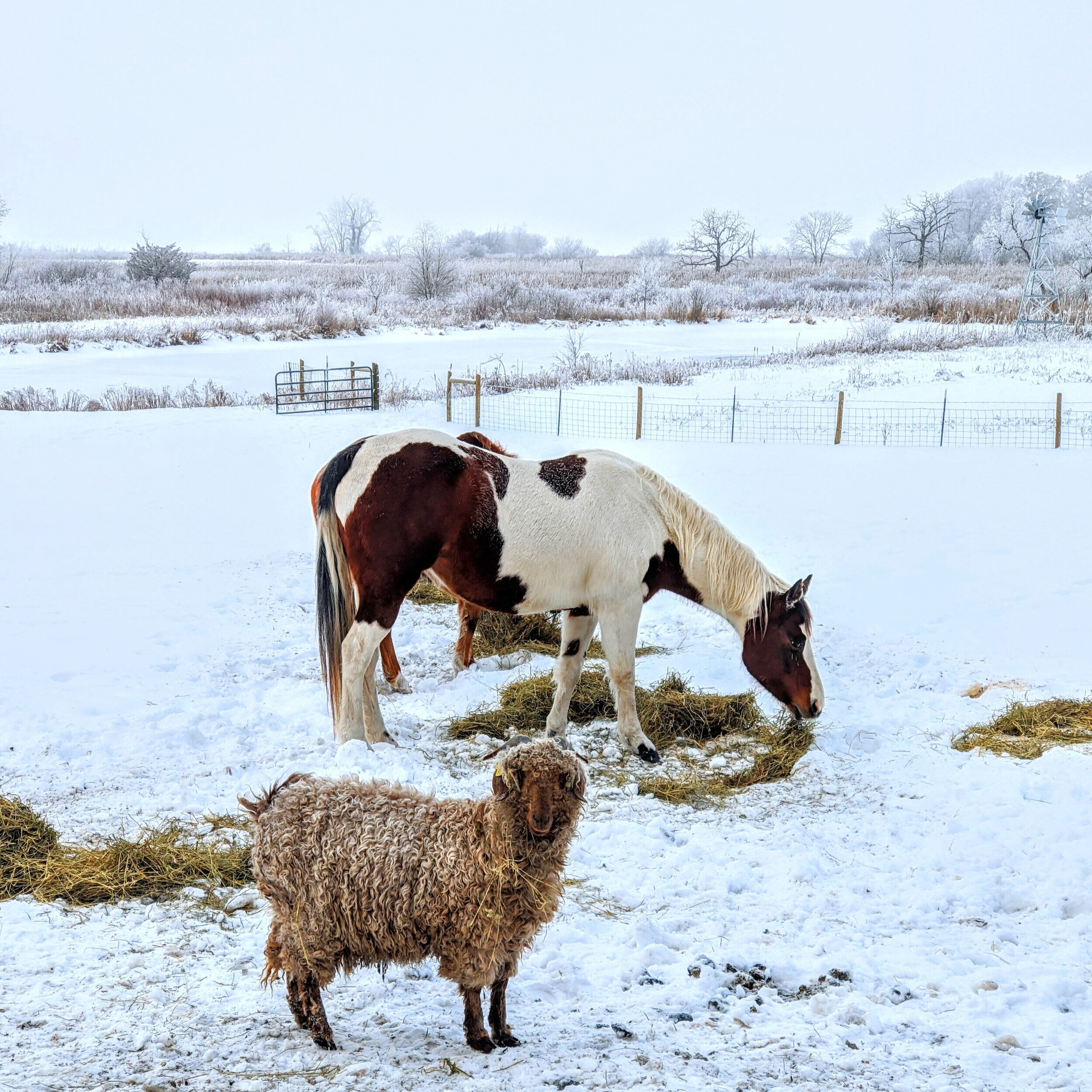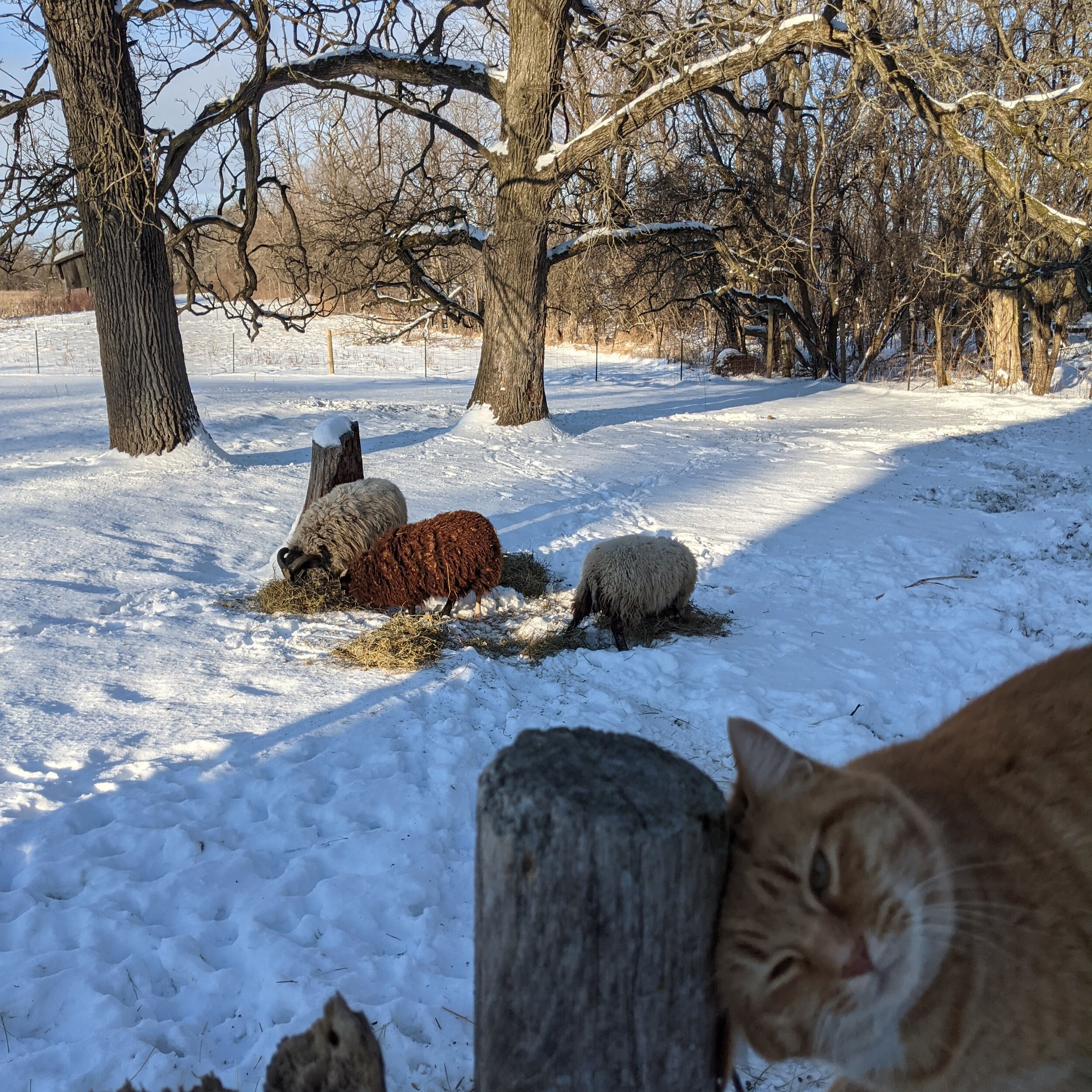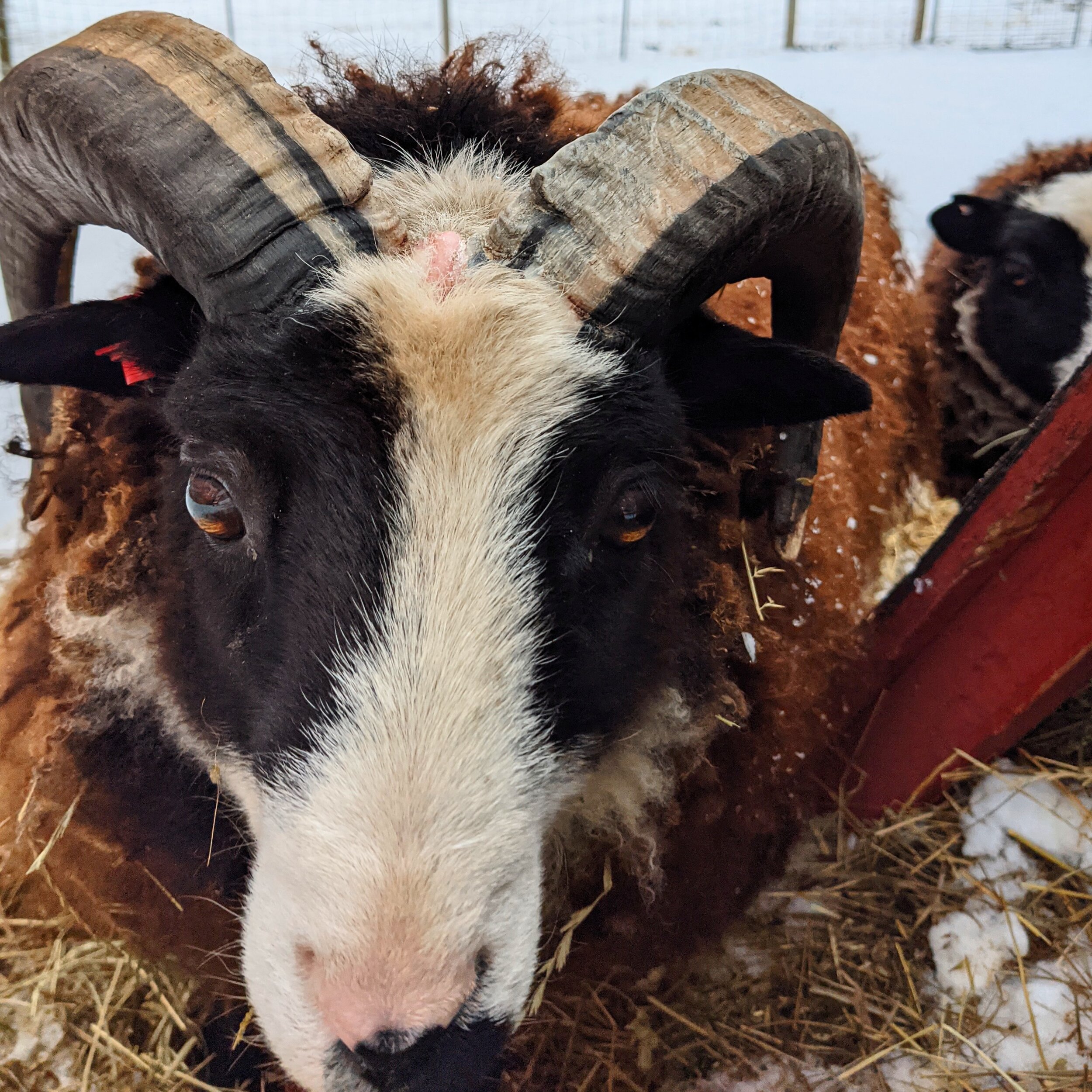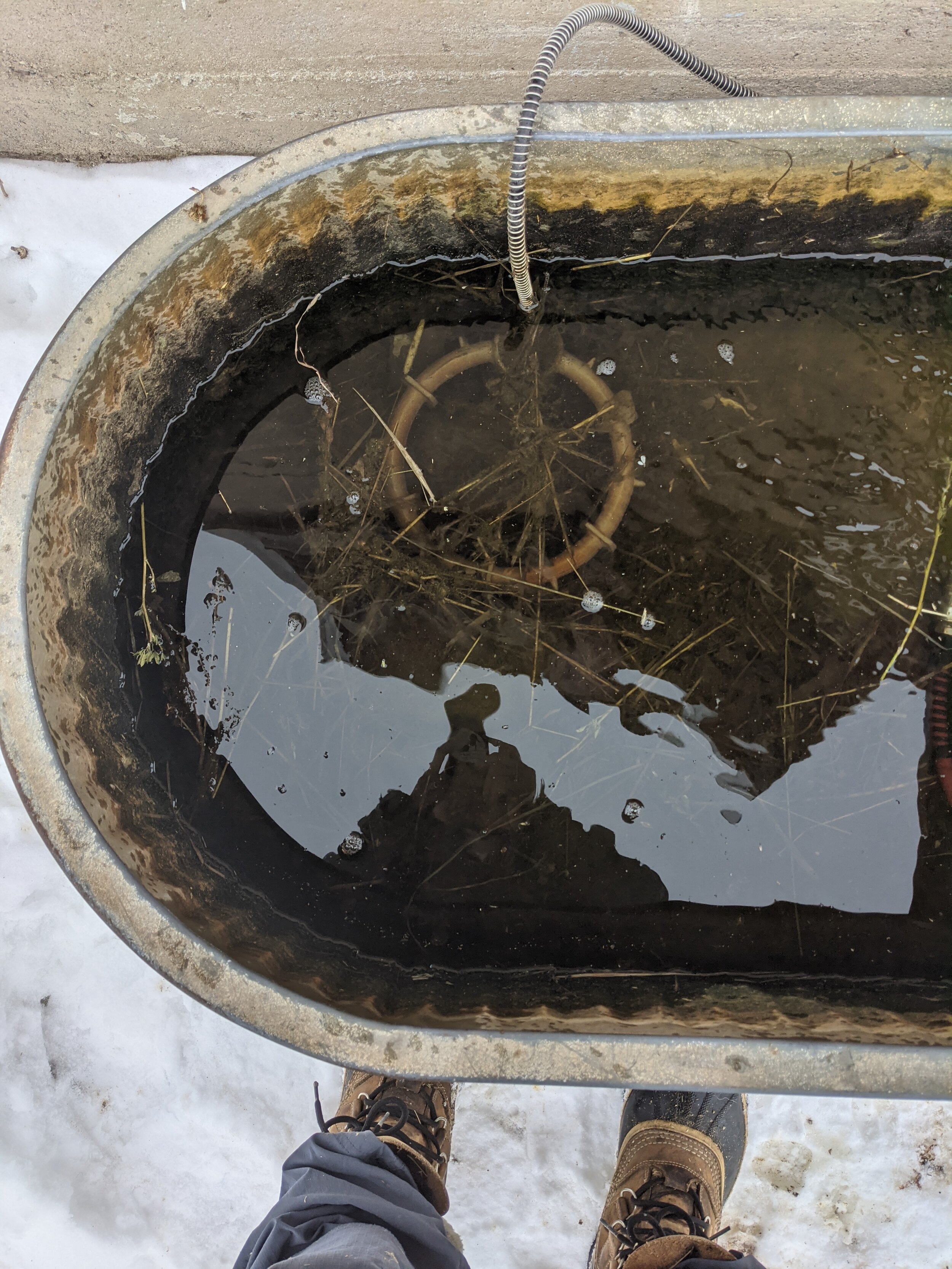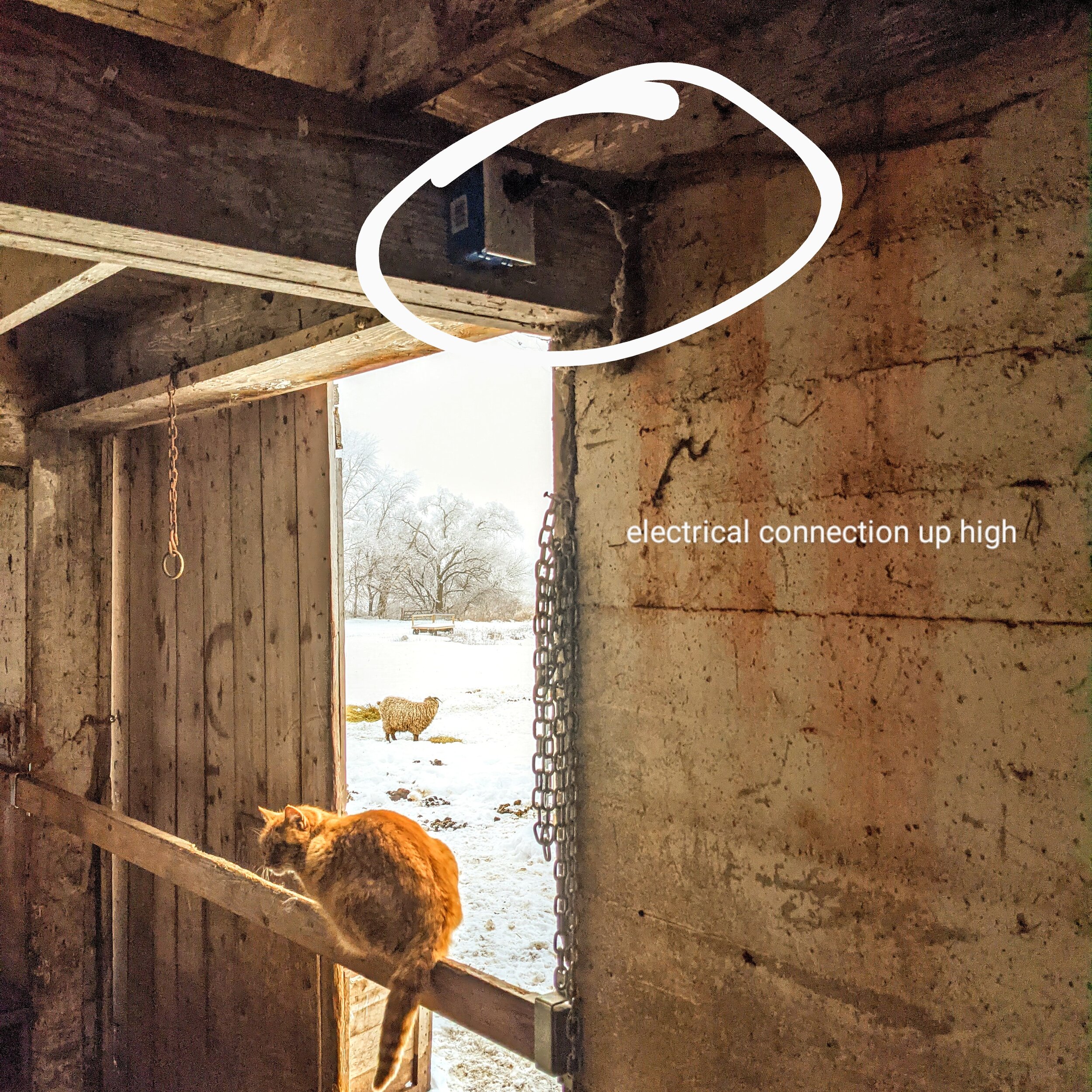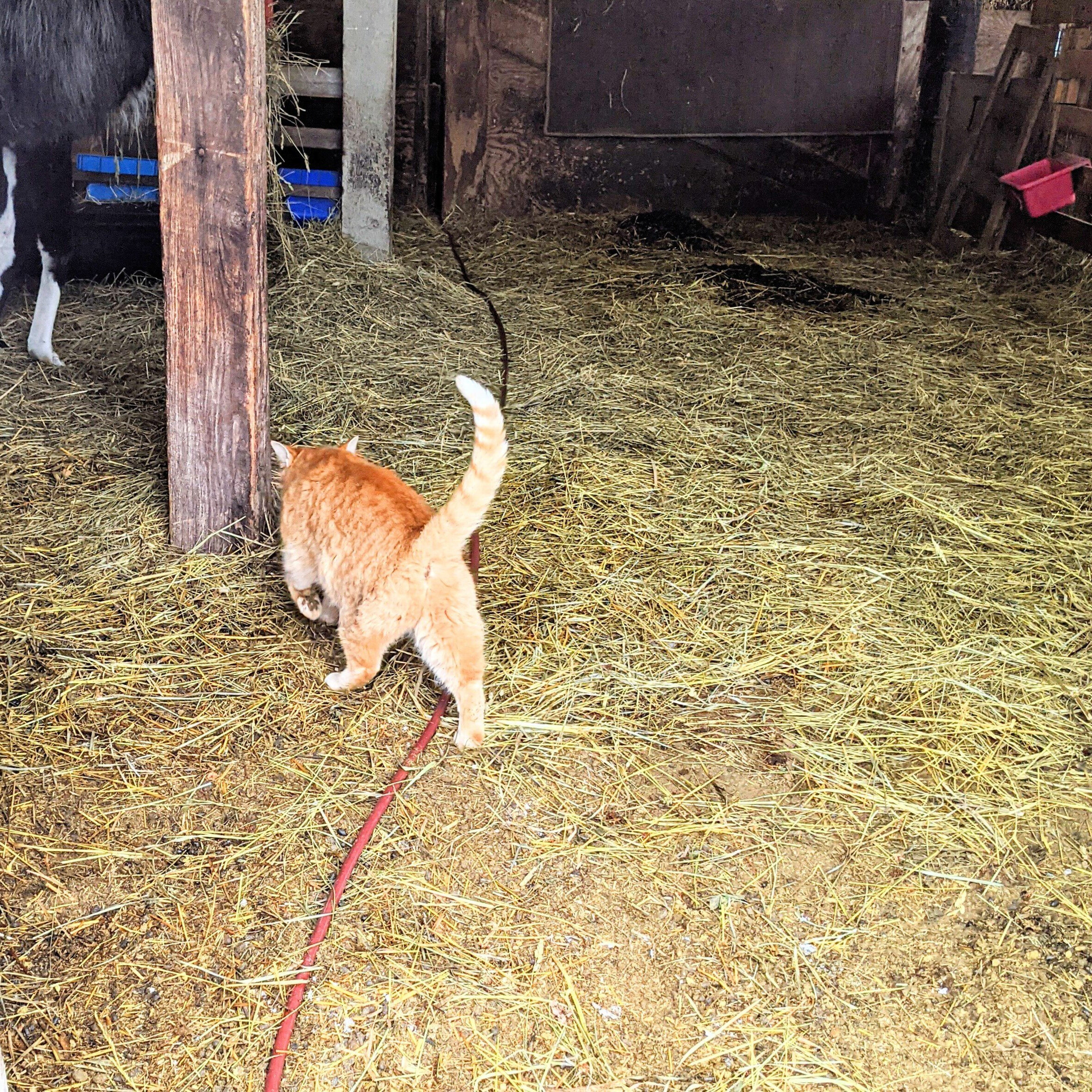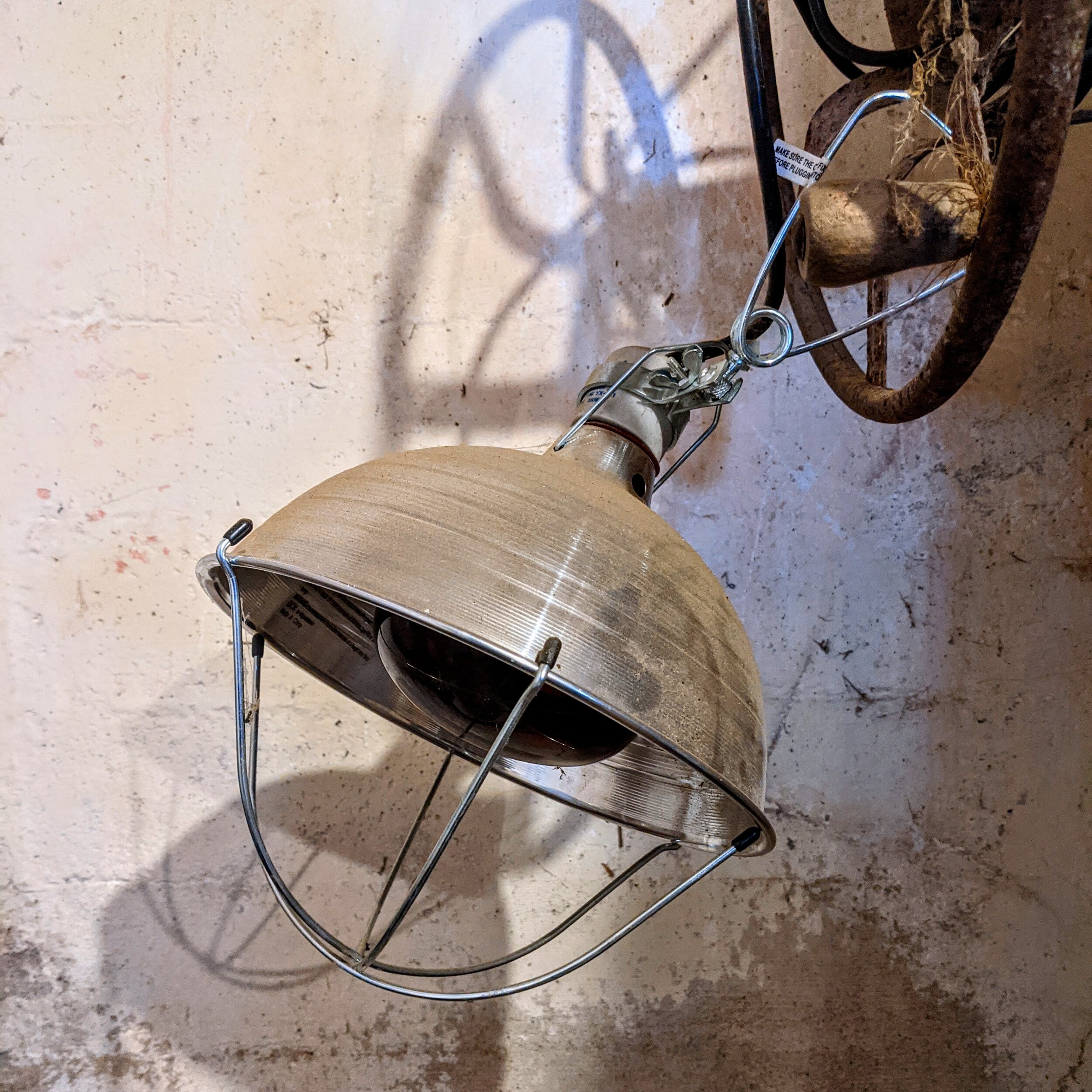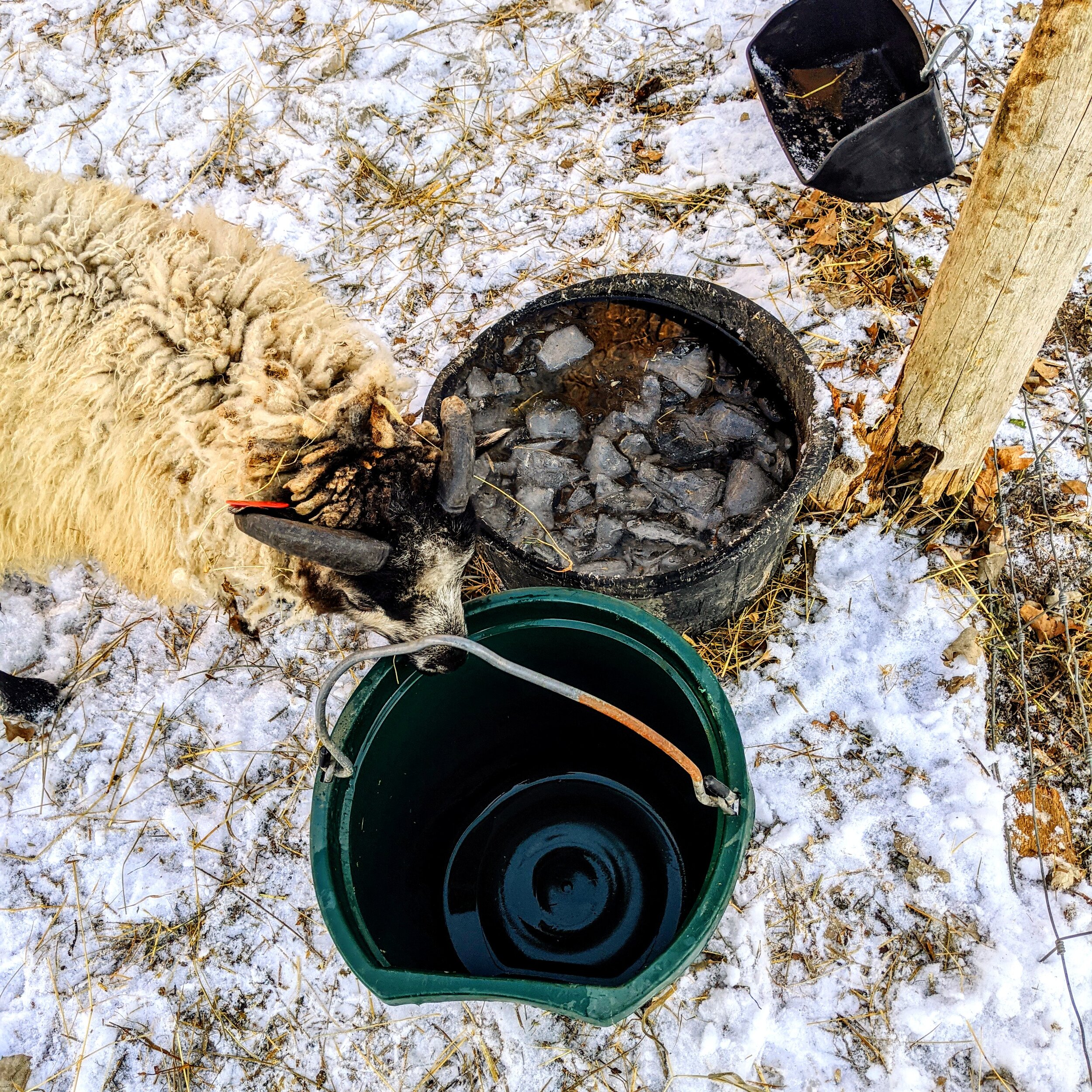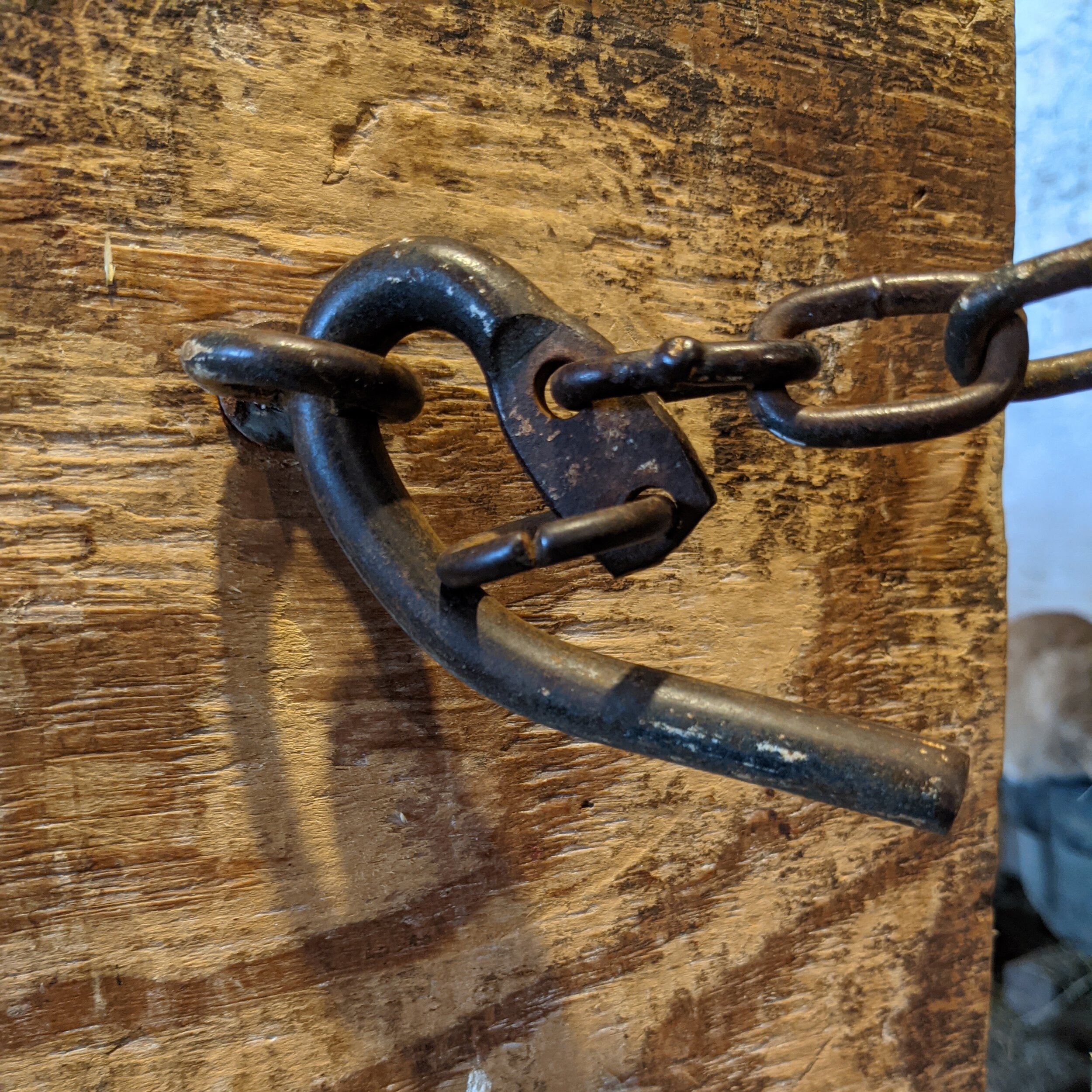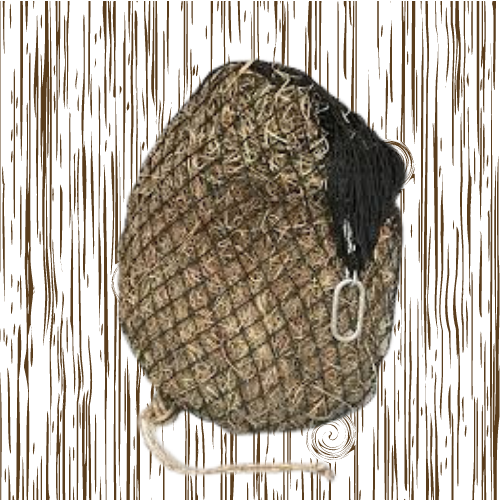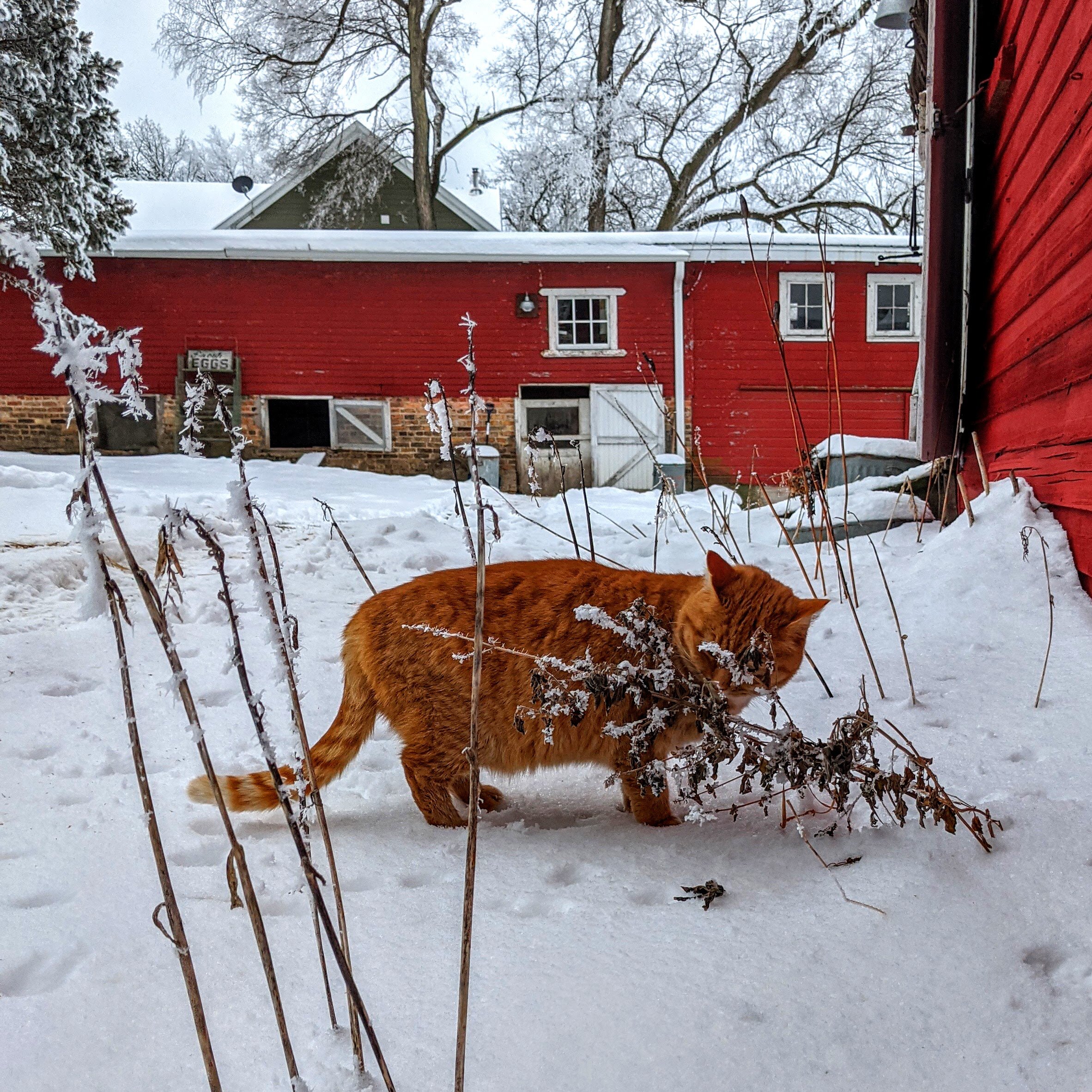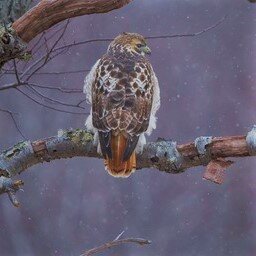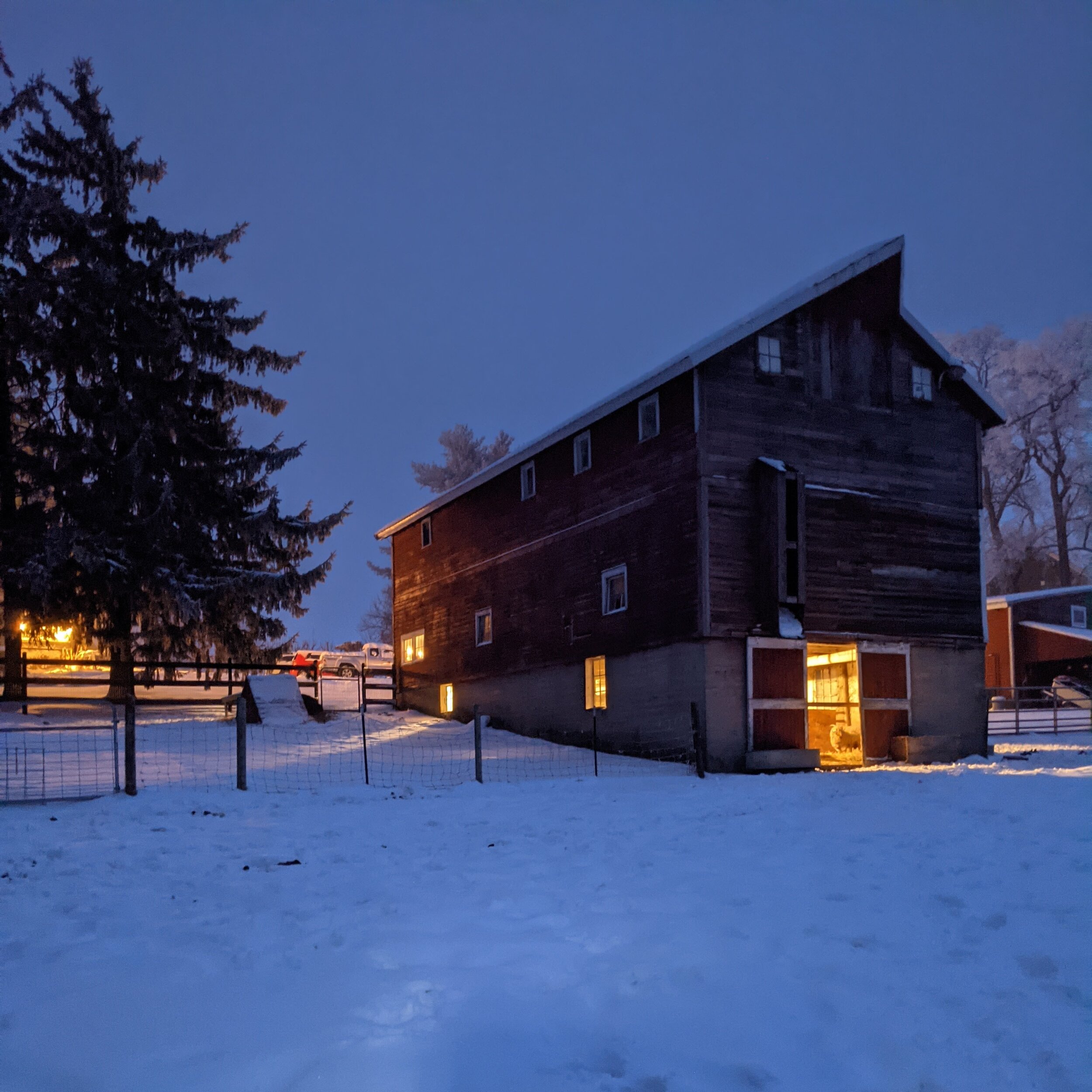Forward on the Farm
There are always chores on the farm but one of the great joys of farm life is that everything changes with the seasons. I love the winter, and winter chores in particular. As described in the previous post, mostly because I’ve figured out the right gear to wear to stay warm and dry!
Winter chores are condensed to around the barns, and animals. First off - the chicken house. I open the doors and windows and feed the girls and gather the eggs. Chickens can take the cold temps as long as they stay dry. All those feathers insulate pretty well and they bunch up at night. It is more important in the winter to keep the air refreshed. The house can build up ammonia and moisture if fresh air does not get in. Keeping their water open is important also. I put a heated base on an upturned rubber pan, place a large saucer to catch the duck swishing overflow and place a 3 gallon waterer on top. Last year Ed added 2 windows on the south side of the henhouse and the added light has helped with egg production. The girls are ramping up after the fall molt and new feather growth. We should be starting up our egg subscriptions soon. Eggs go into the farm storeroom, get cleaned, and boxed up and into the fridge. Waterers restocked, and I’m on to the barn for the other animals.
The sheep are still in their separate breeding groups, but the goats and llama are in the big barn. Chores start upstairs doling out feed for horses and barley for goats and llama. Angora goats need a little higher nutritional plane to produce all that mohair so they get a little extra organic grain. The horses have a pelleted feed to balance their ration and get them the minerals they don’t get from hay. Everyone has hay that we produce off our hay field and stuff into every building we can.
In my pocket, I carry 2 tools to help with my chores. One, a small leatherman multi tool and the other, my hay string cutter. I love this tool because it is a great cutter that wont stab me in my pocket. I can cut hay strings in my mittens. I save the hay strings to trellis my tomatoes in the summer.
In the morning, I walk out, away from the barns, tossing small piles of hay on the snow in the field. Horses are designed to walk awhile, eat, walk a little , eat a little. In the winter, they need to move around and not just stand at a hay bunk. So I make them work for it. It slows down the hay consumption and keeps them moving. At night, I feed them hay in slow-feed hay nets. Again, it slows them down, keeps them chewing, producing gut buffering saliva, and keeps them busy all night in the low temps. I hang them high enough they wont catch their feet. Hay Chix makes a brand that is super tough with heavy duty ropes, an easy closing system, and heavy duty caribiner clip to hang. I do not feed the horned animals with hay nets; too easy to get those horns stuck. It has helped immensely on wasted hay. The sheep get their hay either on the snow in the morning or in hay bunks. They are pretty thrifty, not much gets wasted. The goats, well that’s another story, they just eat everything and then some. Gotta watch em’
Down I go to feed everyone. Out in the paddocks I pitch hay, refill water buckets and check all the animals. I check the fences and gates to make sure everyone is where they belong. Sometimes I do a repair, or a little project. I am presently replacing all my gate latches with these kiwi gate latches that are the bomb. They are easy to open and close with one hand which is usually what is happening as I am carrying something in and out of a gate. They are also easy to manipulate with mittens. They don’t ice up or freeze in the winter. There was one of these already on the farm when we arrived, and I have been looking for 5 years and finally found a source !
I pick out the horses’ feet and check on minerals and salt. Everyone gets free choice loose salt, and kelp. All the animals live outside but have the choice to come in a barn or run in shed and get out of the rain. For the most part, they choose outside. We choose breeds that are appropriate for our area of the world and they have beautiful natural coats that protect them from the elements. Many times, I go out and find a layer of snow over their backs, but if I slip my hand into their thick coats its warm. If they have hay in their bellies, their internal furnaces keep them comfy.
The biggest tasks are around keeping everyone in open water. On our farm, the weakest link in my infrastructure is my water system. We have one hydrant in the back of the lower level of the big barn. All waterers must be filled from there or the house basement. It can get quite cold in the barn. so...I don't ever leave a hose there, in the winter they stay in the house and I take them to the barn. Then, I hook up the hose and fill the tanks and waterers. I have 2 stock tank heaters, one in the barn, and one outside. They are thermostatic, meaning they only turn on when the temps are below freezing.
Ed redid the electric to have outlets as close as possible. and I limit the extension cord usage. I am terrified of a barn fire. I use a cord connection cover and hide the connection behind the sliding barn door.
If the temps are below 0 degrees, I put a heat lamp on the hydrant to keep it from freezing up. Lesson learned, and I never leave a hose connected to the hydrant, another lesson learned.
Watering takes up most of my chore time, but it is very important, sheep and goats are picky about clean water and the horses drink almost twice as much in the winter than they do in the summer. It helps them regulate their temps and stay warm. I check water for the sheep twice a day to make sure their buckets are open and unfrozen. I prefer to keep water for them in smaller rubber tubs and pails that are easier to bust the ice out of. They are a bit more flexible when they freeze and resist cracking.
So that’s what I do.. Morning and evening. Ed deals with snow removal. He clears paths with the snow blower that came with the farm. He makes paths for me down to the barns and then the driveway and a path over to mom and dads house and then their driveway. Occasionally we must scrape snow off some of the roof but mostly we just hunker down and do inside projects, plan for the spring and paint.
This is how I have developed my chore system, it’s not what everyone else might do but it works for me. Here is a gallery of my favorite tools. The pictures are clickable links that will take you to where you can find them. and here’s a coupon for the Hay Chix haynets if you want: http://682haychix.refr.cc/browndogfarmwi
My chores organize my day, give me a workout, and teach me about my animals and my land. I am outside in the winter. I get to notice, the gorgeous hoarfrost after a foggy morning, or watch a red-tailed hawk dive and catch a rabbit in the field. I watch night fall crystal clear and quiet. Through my work I love this land, but the land loves me back, through its beauty, its abundance, and its inspiration. It is good and we move together, Forward.

